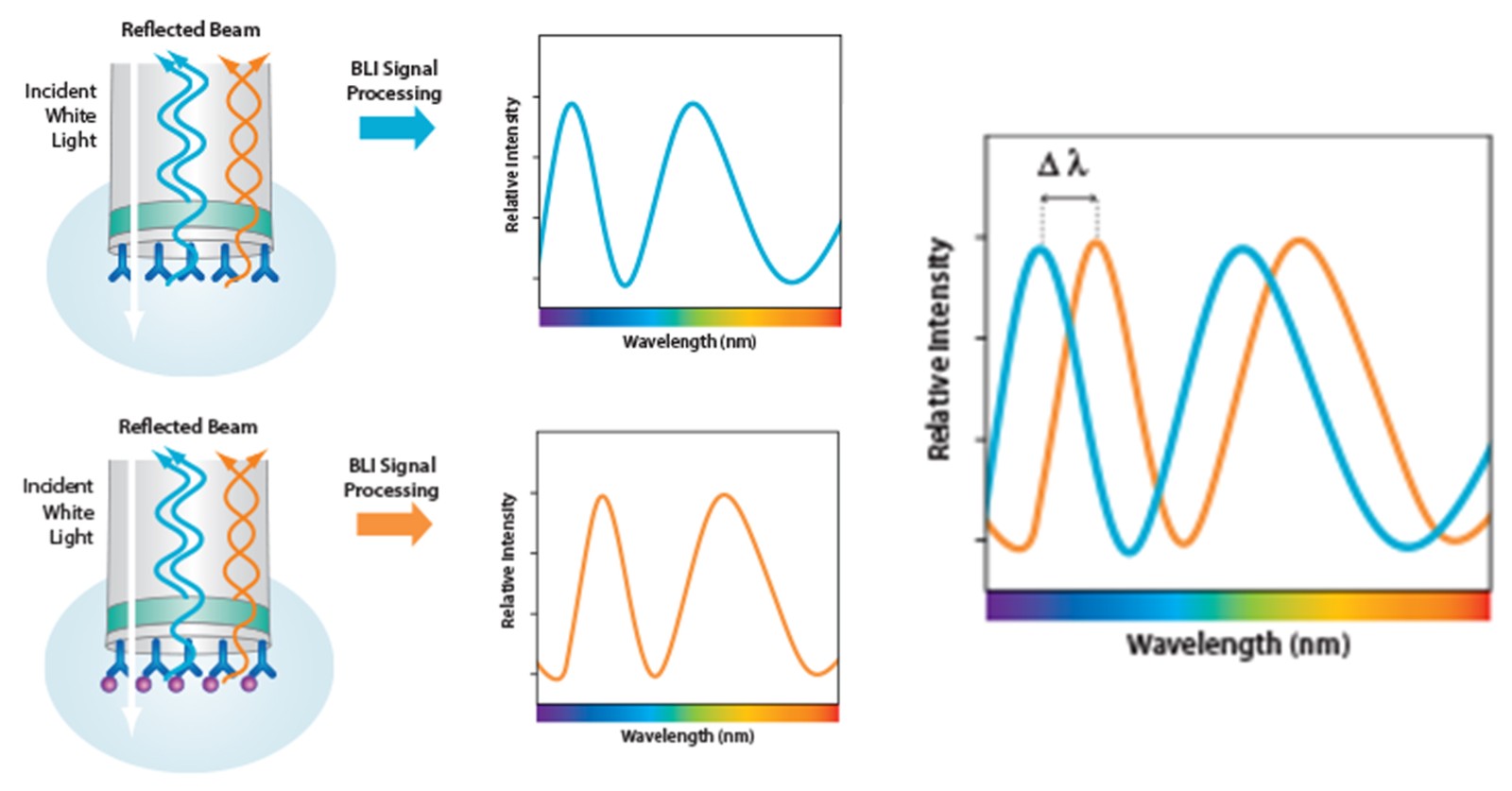Biosensor technologies based on optical principles, represented by surface plasmon resonance (SPR) and bio-layer Interferometry (BLI), have been widely used in early drug discovery. These drug discovery areas include but are not limited to the screening and analysis of small molecules, antibody screening and characterization, as well as biomarker detection. Creative Biostructure can utilize BLI technology to screen and characterize hit compounds and antibodies. BLI is a technique similar to SPR, which can directly measure the binding kinetics between biomolecules in real time without the need for labeled reagents.
BLI is a promising biosensor platform developed by ForteBio for monitoring the interaction between a target immobilized on the surface of a biosensor and a ligand in solution flowing through the biosensor surface. The binding events can be tracked by wavelength changes, which are caused by the increase in optical thickness at the surface. The interference patterns produced by the light reflected from the biosensor tip surface are analyzed to measure the binding affinity and kinetics of biological macromolecule interactions. The affinity of small molecules to targets can be determined by solution competition experiments. In a BLI experiment, a biosensor tip is exposed to light and buffer conditions, and then served as a control. The remaining biosensor tips are exposed to experimental conditions. The binding partner is immobilized to form a layer, and analytes are in a microplate. The change in the thickness of the outer layer of immobilized protein reflects the change in wavelength when the two binding partners interact, which can be recorded with high accuracy in real time. However, it is mostly used to screen for biomolecules, for example, monoclonal antibodies.
 Figure 1. The schematic of the BLI biosensor platform, developed by ForteBio.
Figure 1. The schematic of the BLI biosensor platform, developed by ForteBio.
BLI has the advantages of high sensitivity, high throughput, low mechanical/vibrational noise, and is more cost-effective than the SPR approach. However, there are drawbacks to this technique. Since this technique is still relatively new, more problems required to be solved before full repeatability can be achieved, and the experimental data should be cross-validated with the SPR.
Creative Biostructure also provides a variety of biophysical technologies other than BLI technology to identify and characterize the interactions between compounds and their target proteins. We support primary screening, validation of target engagement, identification of the molecular mode of action, and characterization of binding kinetics/thermodynamics of binding events. Please feel free to contact us if you would like more information.
References

Easy access to products and services you need from our library via powerful searching tools